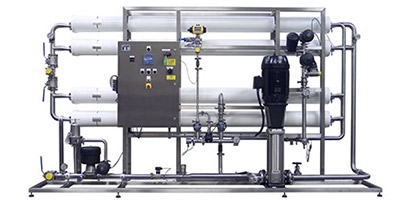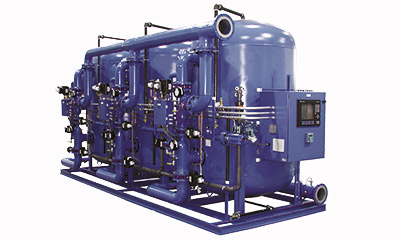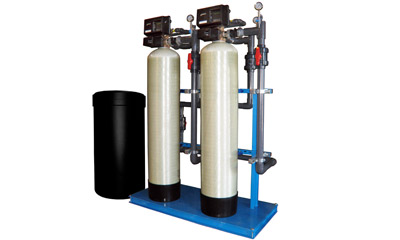
Reverse Osmosis Water Treatment System
Reverse osmosis (RO) is a water purification technology that uses a semipermeable membrane to remove larger particles from drinking water.
In reverse osmosis, an applied pressure is used to over-come osmotic pressure, a colligative property, that is driven by chemical potential, a thermodynamic parameter.
Reverse osmosis can remove many types of molecules and ions from solutions, including bacteria, and is used in both industrial processes and the production of potable water. The result is that the solute is retained on the pressurized side of the membrane and the pure solvent is allowed to pass to the other side. To be “selective”, this membrane should not allow large molecules or ions through the pores (holes).
Sand Filters
Sand filters are used in water purification for treating raw water to produce a potable product. They are typically several metres deep (changhing water flow needed), can be rectangular or cylindrical in cross section and are used primarily to treat surface water.

The length and breadth of the tanks are determined by the flow rate desired by the filters, which typically have a loading rate of cubic metres per square metre per hour).

Water Softeners
Water softening is the removal of calcium, magnesium, and certain other metal cations in hard water. The resulting soft water is more compatible with soap and extends the lifetime of plumbing. Water softening is usually achieved using ion-exchange resins.
Carbon Filters
Carbon filtering is a method of filtering that uses a bed of activated carbon to remove contaminants and impurities, using chemical absorption. Active charcoal carbon filters are most effective at removing chlorine, sediment, volatile organic compounds (VOCs), taste and odor from water.

